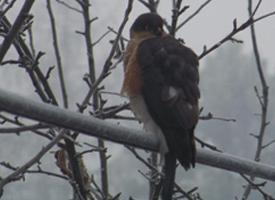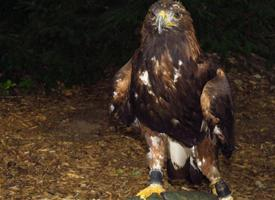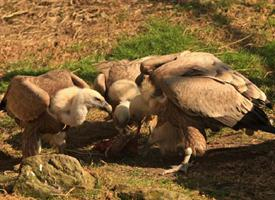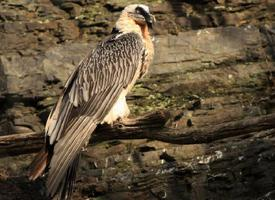
Poids et mesures
| Longueur | de 30 à 39 cm |
|---|---|
| Poids | de 150 à 280 g |
| Envergure des ailes | de 60 à 79 cm |
Description de l'animal
The Eurasian Sparrowhawk (Accipiter nisus), a small yet formidable bird of prey, is an intriguing species found widely across the Eurasian continent. This raptor is distinguished by its remarkably agile flight, compact body, and keen hunting skills, making it a fascinating subject for birdwatchers and ornithologists alike.Adult Eurasian Sparrowhawks exhibit pronounced sexual dimorphism, a common trait among birds of prey, meaning that males and females differ significantly in size and, to some extent, coloration. Males are considerably smaller than females, typically weighing between 110 to 196 grams, whereas females can weigh between 185 to 342 grams. This size difference is thought to minimize competition for food between the sexes and allows them to hunt different prey sizes effectively. Males possess a bluish-grey back and wings, with orange-barred underparts, giving them a striking appearance. Females, on the other hand, display a more muted coloration with a brown back and wings, and their underparts are barred with brown on a white or pale background.
The Eurasian Sparrowhawk's face is characterized by its piercing yellow to orange eyes, a hooked beak designed for tearing flesh, and sharp talons that are essential tools for capturing and killing prey. Its relatively long tail and short, rounded wings are adapted for maneuverability, enabling it to navigate through dense vegetation during high-speed chases.
This bird of prey is predominantly found in wooded areas, though it has adapted to various habitats, including urban settings where green spaces are available. Its diet mainly consists of smaller birds, which it captures with sudden, dashing flights from a concealed perch. However, it is also known to eat small mammals and insects, demonstrating its adaptability as a predator.
The Eurasian Sparrowhawk is a solitary creature, particularly outside of the breeding season. Its call, a series of quick, sharp "kek-kek-kek" sounds, is often heard during courtship or territorial disputes. Breeding season sees these raptors become more vocal and visible, engaging in aerial displays to attract mates and establish breeding territories.
Nests are typically built high in trees using twigs and lined with bark and leaves. Females lay between 2 to 6 eggs, which are incubated for about 33 days. The chicks are altricial, meaning they are born blind and featherless, completely dependent on their parents for food and protection. Both parents are involved in rearing the young, with the male primarily hunting to feed the growing brood.
Despite facing threats from habitat loss, pesticide use, and persecution, the Eurasian Sparrowhawk has shown a remarkable capacity for adaptation, maintaining stable populations in much of its range. It is protected under various international conservation laws and agreements, which have helped to ensure its survival.
In summary, the Eurasian Sparrowhawk is a small yet powerful raptor with a wide range across Eurasia. Its distinctive appearance, remarkable hunting skills, and adaptability to different environments make it a key species in understanding avian predators' ecological roles.
Animaux similaires
Nouvelles photos d'animaux
Top 10 des animaux
- Dolphin gull (Leucophaeus scoresbii)
- Japanese macaque (Macaca fuscata)
- Stone loach (Barbatula barbatula)
- Greek tortoise (Testudo graeca)
- Russian tortoise (Testudo horsfieldii)
- Galápagos tortoise (Geochelone nigra complex)
- Diana monkey (Cercopithecus diana)
- Moustached guenon (Cercopithecus cephus)
- Common flying dragon (Draco volans)
- Galápagos penguin (Spheniscus mendiculus)


